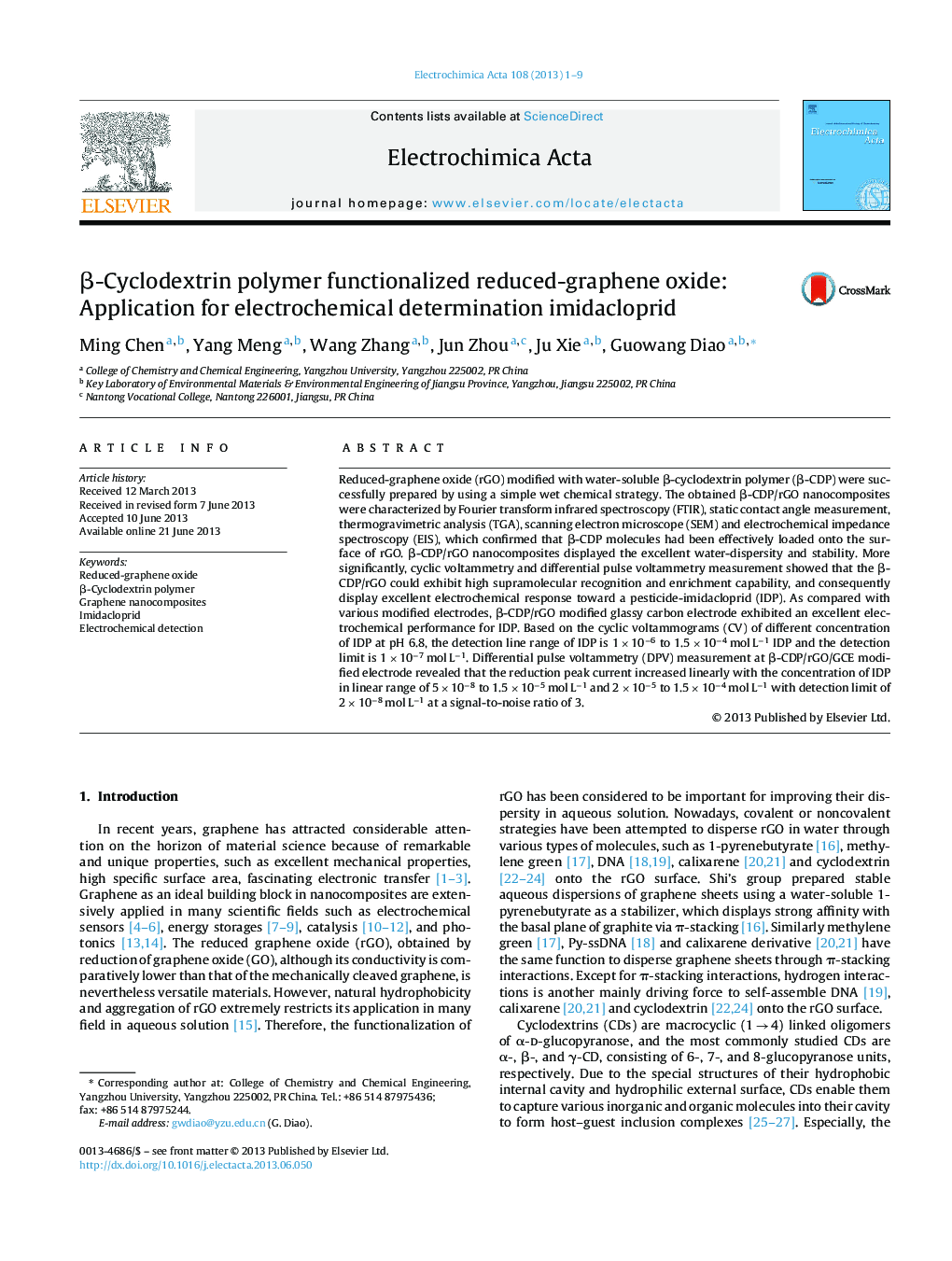| Article ID | Journal | Published Year | Pages | File Type |
|---|---|---|---|---|
| 186765 | Electrochimica Acta | 2013 | 9 Pages |
•β-CDP/rGO nanocomposites were prepared by a facile strategy.•β-CDP/rGO nanocomposites displayed the excellent water-dispersity and stability.•β-CDP/rGO exhibited high supramolecular recognition and enrichment capability.•β-CDP/rGO electrode showed excellent electrochemical performance for IDP.
Reduced-graphene oxide (rGO) modified with water-soluble β-cyclodextrin polymer (β-CDP) were successfully prepared by using a simple wet chemical strategy. The obtained β-CDP/rGO nanocomposites were characterized by Fourier transform infrared spectroscopy (FTIR), static contact angle measurement, thermogravimetric analysis (TGA), scanning electron microscope (SEM) and electrochemical impedance spectroscopy (EIS), which confirmed that β-CDP molecules had been effectively loaded onto the surface of rGO. β-CDP/rGO nanocomposites displayed the excellent water-dispersity and stability. More significantly, cyclic voltammetry and differential pulse voltammetry measurement showed that the β-CDP/rGO could exhibit high supramolecular recognition and enrichment capability, and consequently display excellent electrochemical response toward a pesticide-imidacloprid (IDP). As compared with various modified electrodes, β-CDP/rGO modified glassy carbon electrode exhibited an excellent electrochemical performance for IDP. Based on the cyclic voltammograms (CV) of different concentration of IDP at pH 6.8, the detection line range of IDP is 1 × 10−6 to 1.5 × 10−4 mol L−1 IDP and the detection limit is 1 × 10−7 mol L−1. Differential pulse voltammetry (DPV) measurement at β-CDP/rGO/GCE modified electrode revealed that the reduction peak current increased linearly with the concentration of IDP in linear range of 5 × 10−8 to 1.5 × 10−5 mol L−1 and 2 × 10−5 to 1.5 × 10−4 mol L−1 with detection limit of 2 × 10−8 mol L−1 at a signal-to-noise ratio of 3.
Graphical abstractFigure optionsDownload full-size imageDownload as PowerPoint slide
